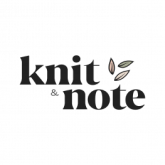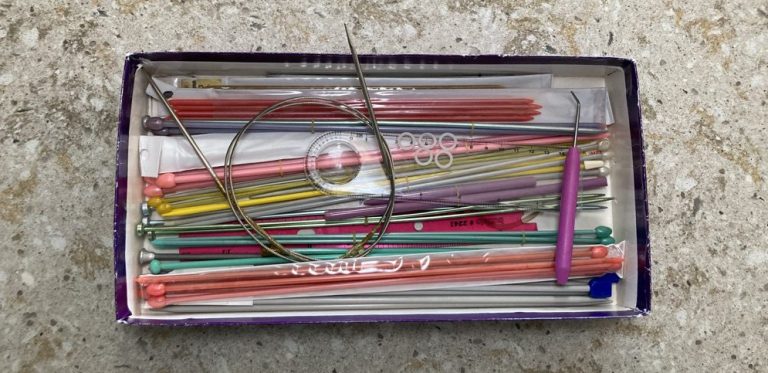When I first started knitting it was on big, long, straight needles. Unnecessarily long, I should add, given that I was knitting a headband. However, that is what I had at hand from my mom’s tin filled with old supplies. I picked up bits and pieces about different types of needles over the years. Recently, I thought how much I would have appreciated having it all listed out for me. So that is what I hope to do here: helping you get to know your needles with this beginner’s guide.
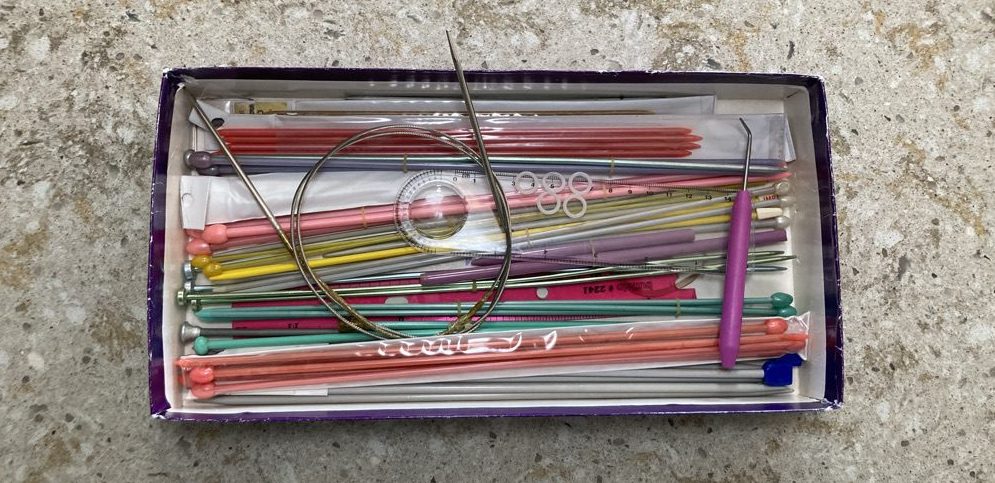
Sizing
There are many different knitting needle sizing systems. The most popular one will differ depending on where your live, or where the needles you bought are manufactured. In the United States, you will be likely to find the US measuring system (denoted by a US after the number), and these typically go from 000 for the smallest sizes and 15 (and beyond) for the larger sizes. In the UK on the other hand, the smaller sizes are labelled with higher numbers and the larger the size, the smaller the number. The most consistently used system, the one I think of as that binding them all together, is measured in millimetres. These millimetres measure the diameter of the knitting needle. The real takeaway here is just to be aware of these different ways of labelling knitting needle sizes. More importantly, take note of what system the pattern or yarn label that you are looking at is using, and make sure that it matches up with the needles that you are using to knit.
Types of Needles
I will talk about the types of needles here, but not what they’re made of. Typically, I have found that to be more of a matter of personal preference and I think I’ll have to leave that for another post. If you use the Knit&Note App, you will recognize these labels as the ones we use in the Needle Stock part of the app. After reading this, you will know exactly what each one means, and you can go ahead and input the different needles that you have into your Stock.
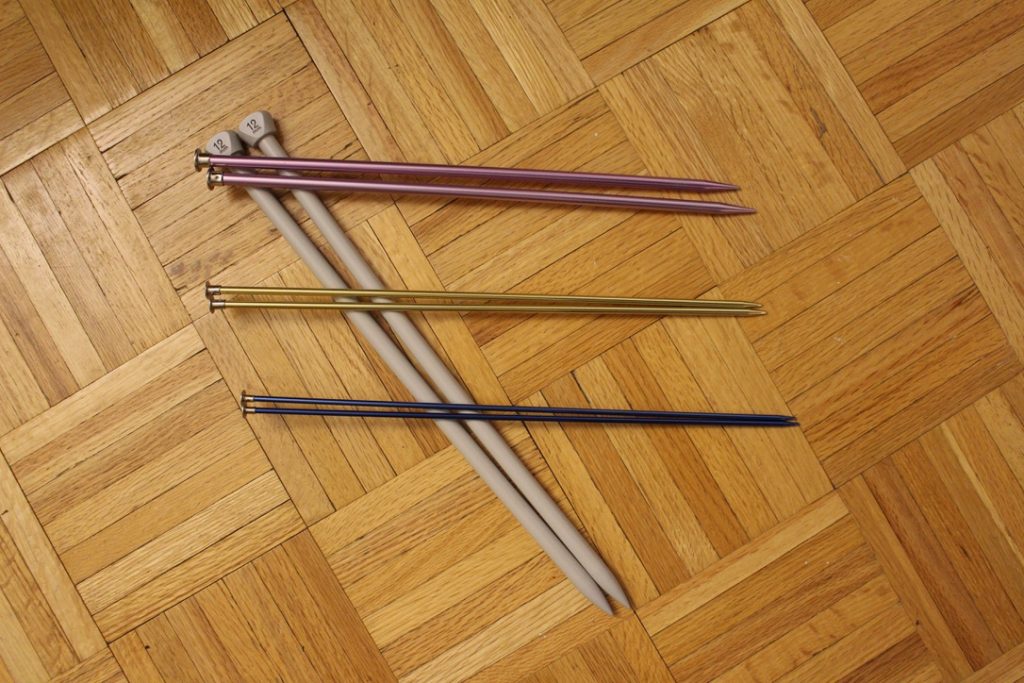
Straight
These are the classic needles you think of when people say, knitting. They come in all sizes and lengths. The size you use will depend on what weight of yarn you are using. The length will depend on the type of project you are making. Shorter length needles are great for smaller objects like scarves and dishcloths, whereas longer needles will be necessary to hold the large number of stitches required for something like a blanket. One thing you’ll notice though, is that straight needles limit you to knitting a flat piece of fabric. You work your way up one side, the right side, and then flip the fabric over to work back along the wrong side (although sometimes these two sides are reversible).

Double Pointed (DPN)
Double pointed needles, often called DPNs, are straight needles that have a pointed tip on both ends. The difference here is that straight needles have a stopper on one end. DPNs also come in all sizes and various lengths, depending on what you are using them for. DPNs are designed to be used to join fabric in the round. This makes them useful for circular items like hats and socks. Because you are continuously knitting in a circle, you do not knit on the wrong side of the fabric like you do when using straight needles, but always work the right side.
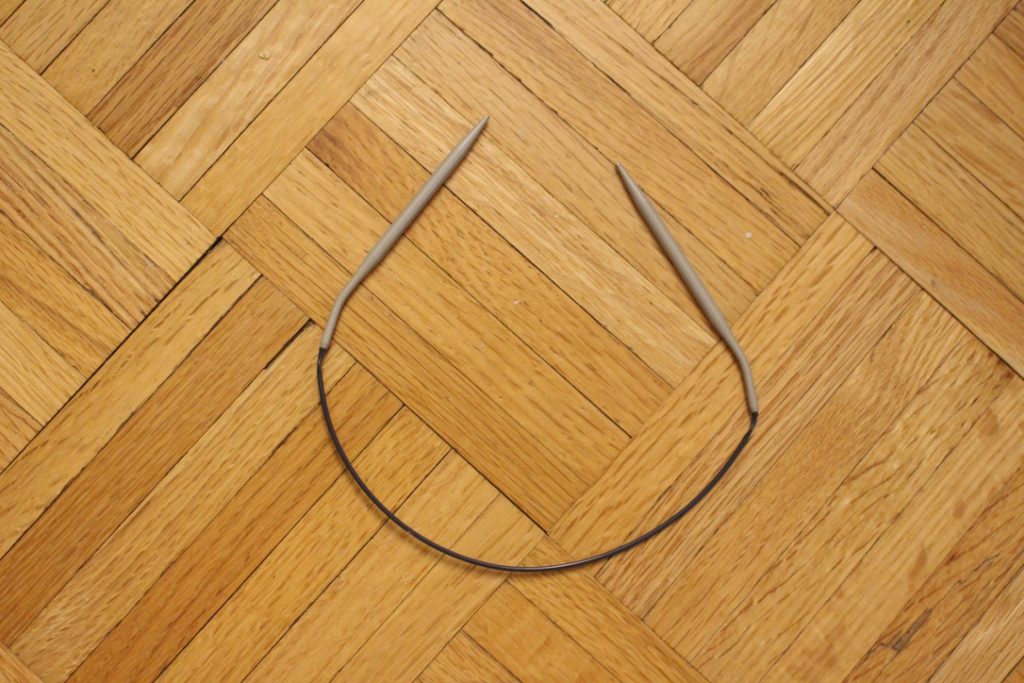
Circular
Circular needles usually take the shape of 2 needle tips, around 5 inches long, attached with a bendy plastic cable. There are lots of variables here. You get different sizes of needle tips, different lengths of needle tip, and different lengths of cable. The needle tip sizes are that same as what we have mentioned with other types of needles. Needle tip length is a matter of personal preference as well as depending on what you are knitting. I’ve seen ones varying from 2.75 inches to 5 inches. The typical cable lengths are 16, 24, 32, 40 and 47 inches. Shorter cables will be suitable for hats, and longer cables will work well for sweaters and cardigans. The thing about circular needles is that they are really useful for anything. You can knit flat fabric with them, like you would with straight needles, and you can knit in the round with them, like you would with DPNs. These are very flexible tools, but as you can imagine, with all the different needle sizes and cable lengths, that is a lot of different combinations to buy. That’s where a special type of circular needles come in handy.
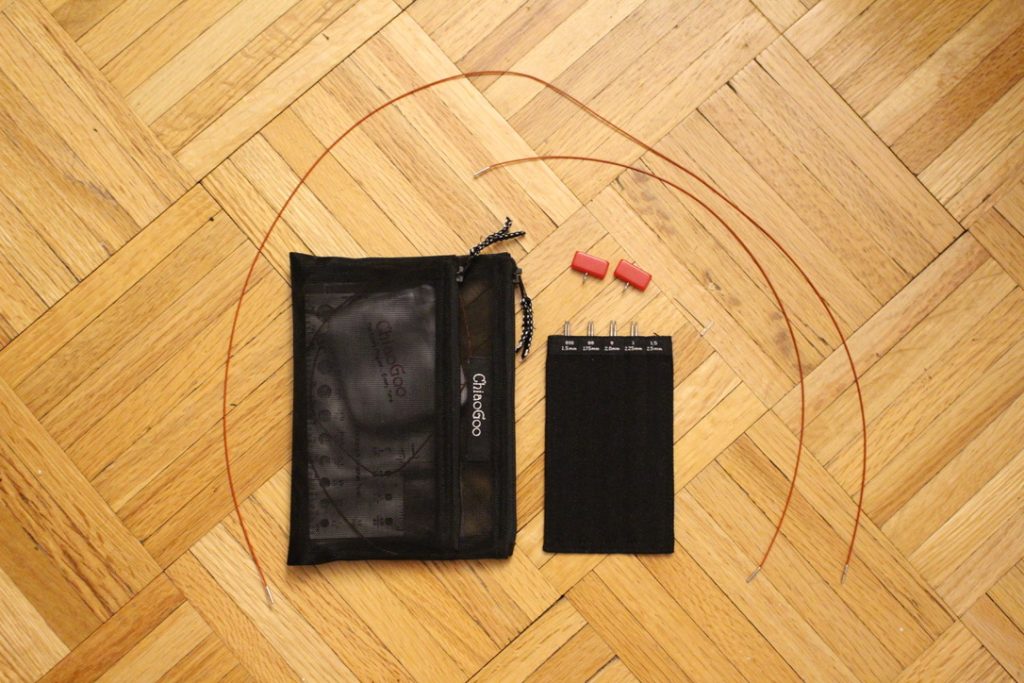
Interchangeable
Interchangeable needles are are usually sold in sets. What these sets consist of is a set of needle tips varying in size, a few different lengths of cable, and a fastening tool. The tips and the cables screw together to create whatever size of whatever length circular needle that you need. So if you’re into using circular needles, these really are a great option to have every size and length combination at your fingertips.
Other Useful Tools
Darning Needle
These are a must have for knitting, so that you can weave in the ends of your yarn.
Cable Needles
This is a double pointed needle with a little buckle or bend. They are designed specifically to make knitting cable designs easier.
Stitch Markers
These are useful for marking certain parts of your knitting. Having purpose built ones is nice, but I have used earrings and paperclips in a pinch.
Crochet Hooks
I find it is super helpful to have a crochet hook around to help me pick up stitches if I accidentally drop them.
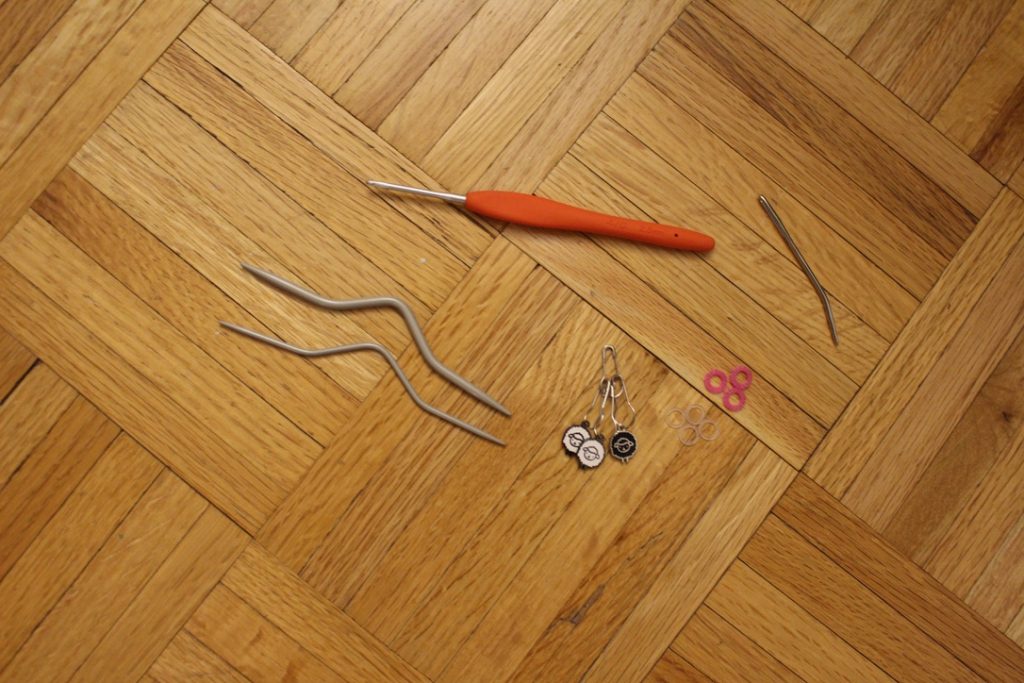
Phew, that was a whirlwind tour. If you are a new knitter, I hope this was a helpful but simple guide to the different types of knitting tools and what they are useful for. Now you can go out a try some of these for yourself. Let us know what your favourites are to use.
